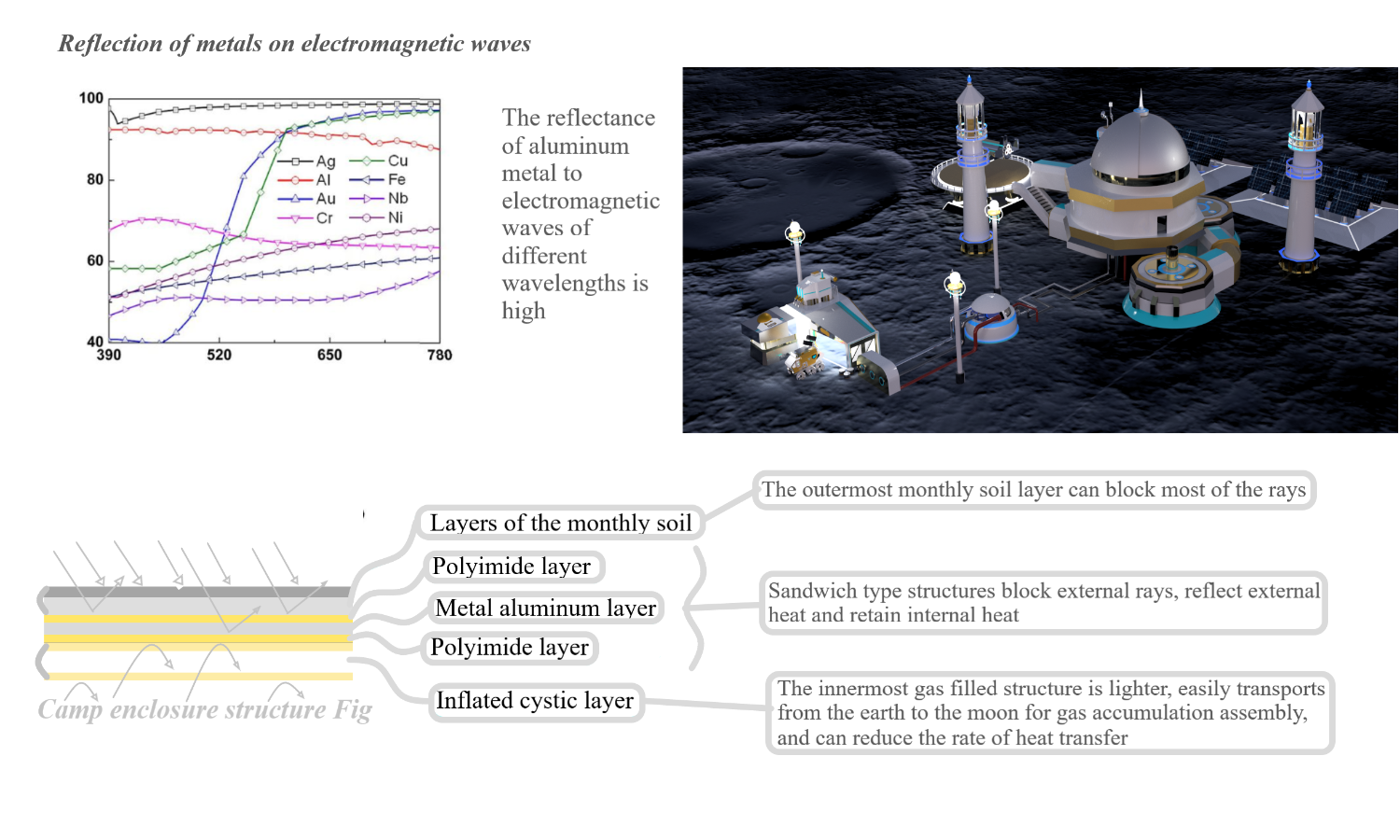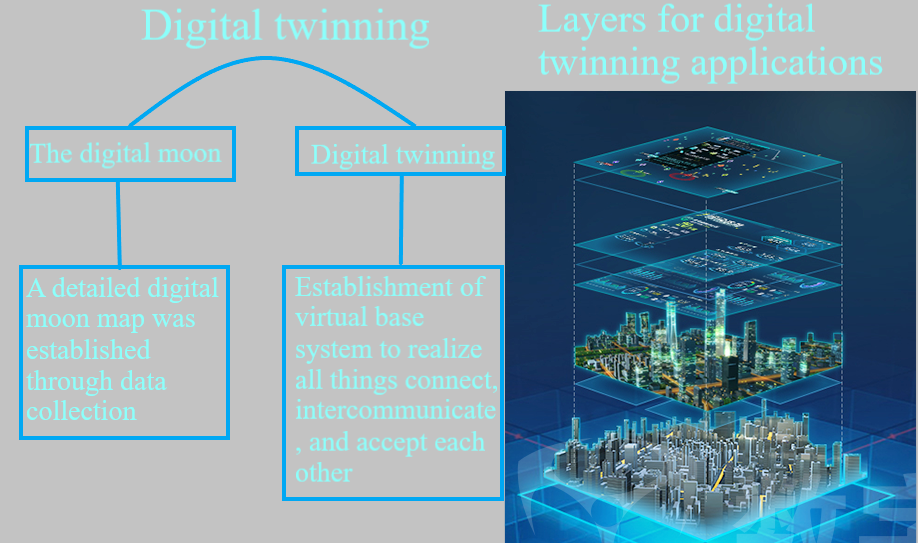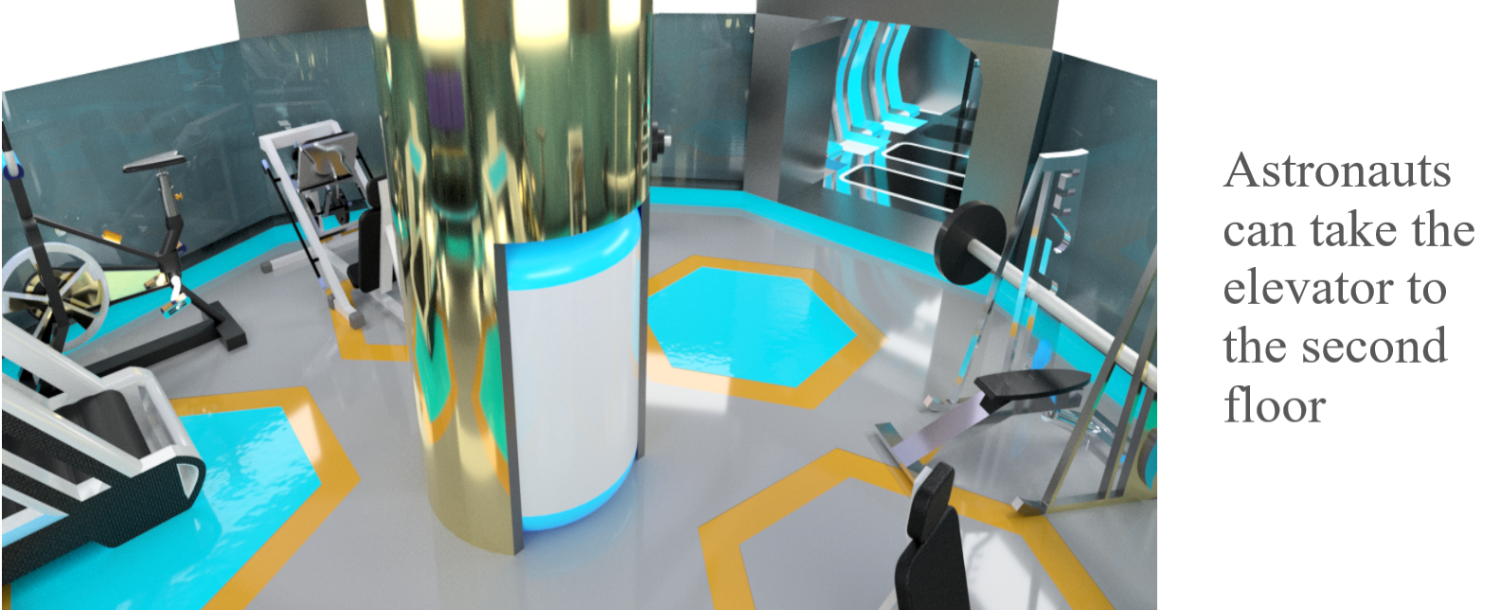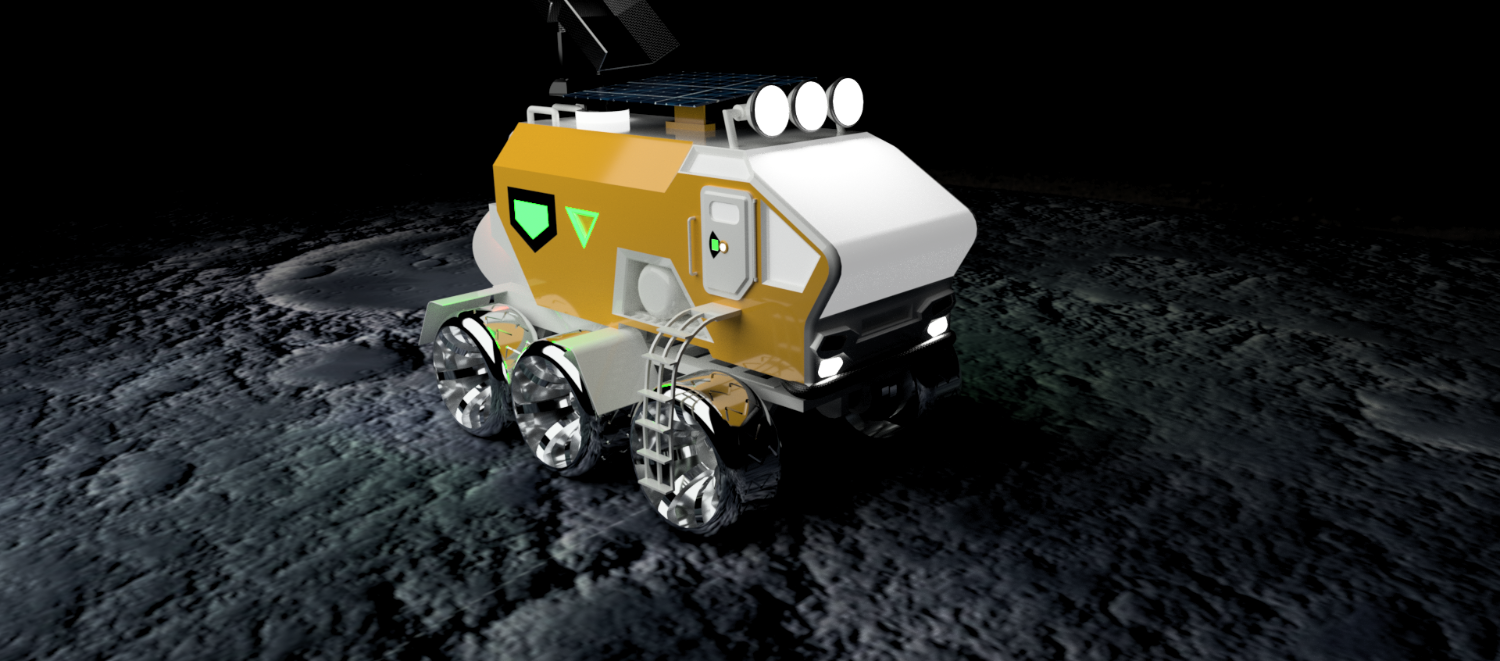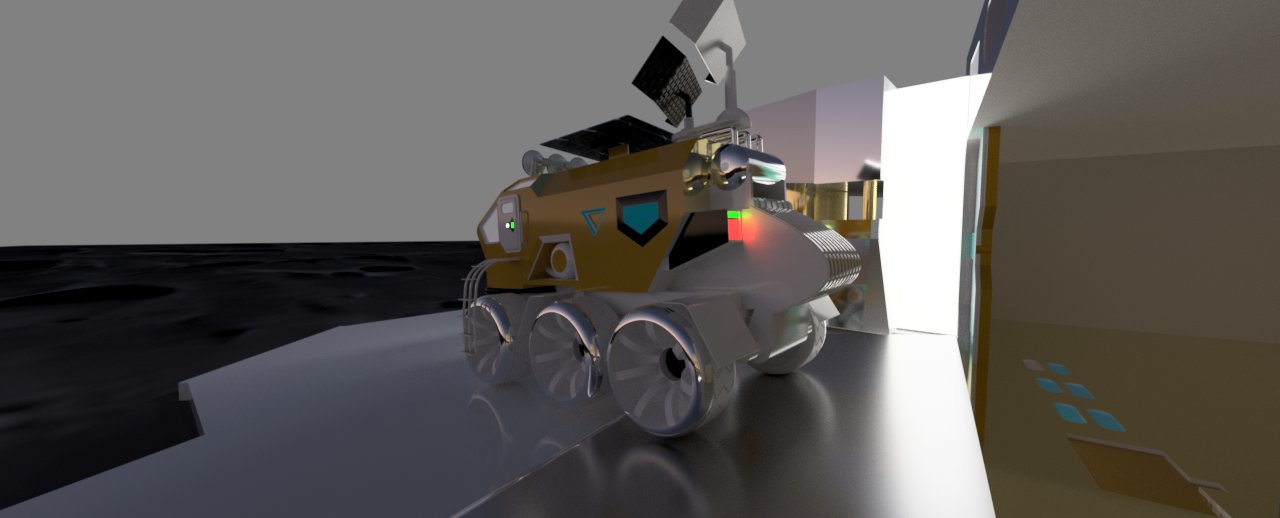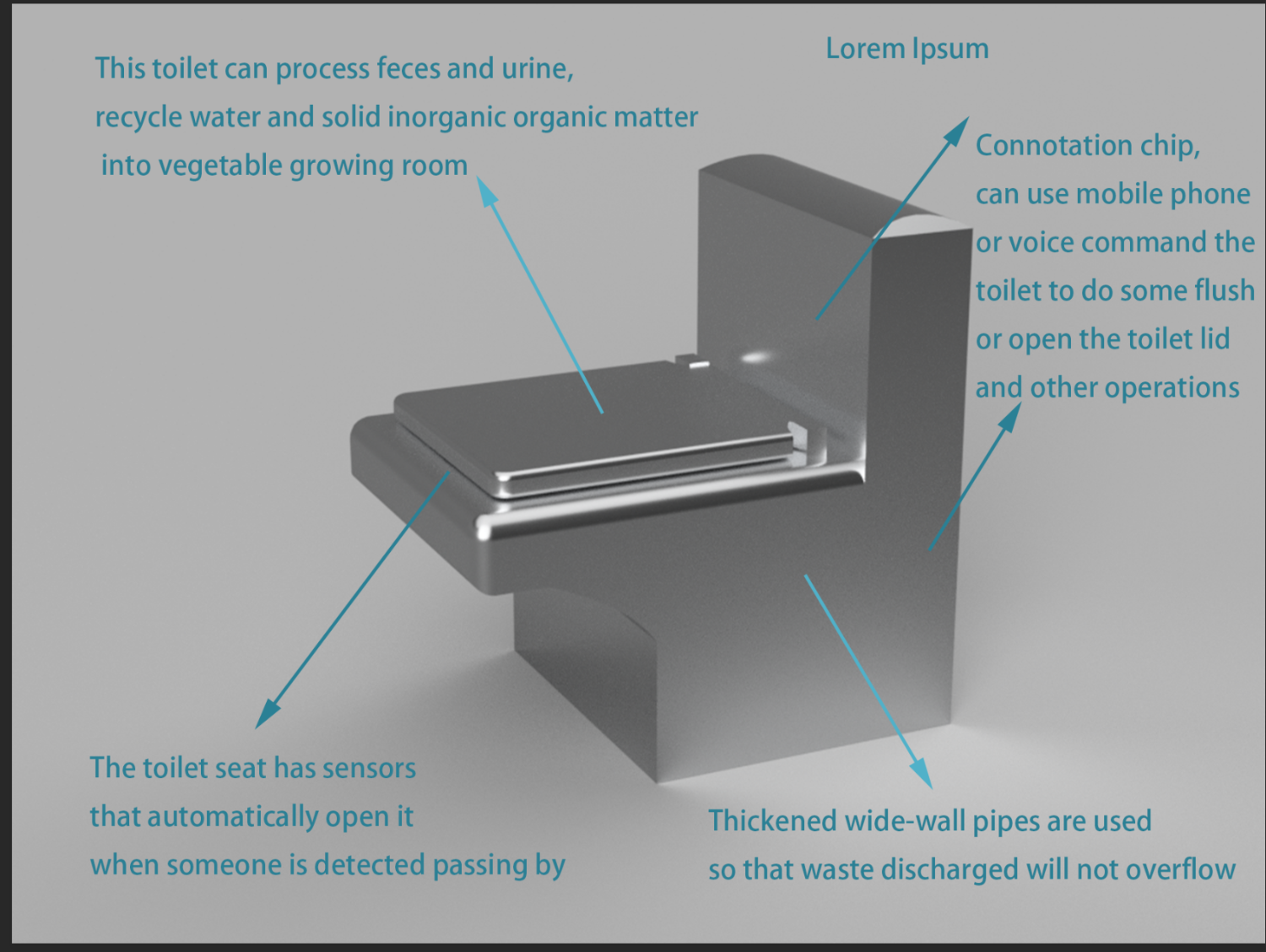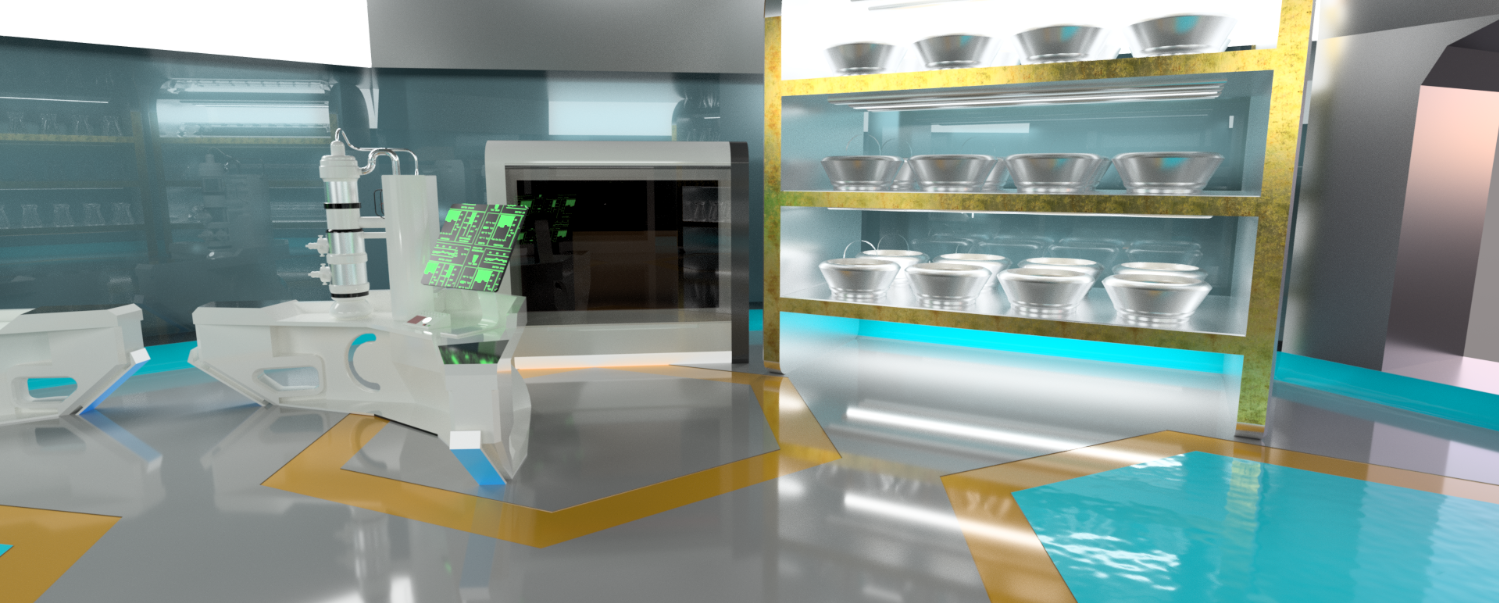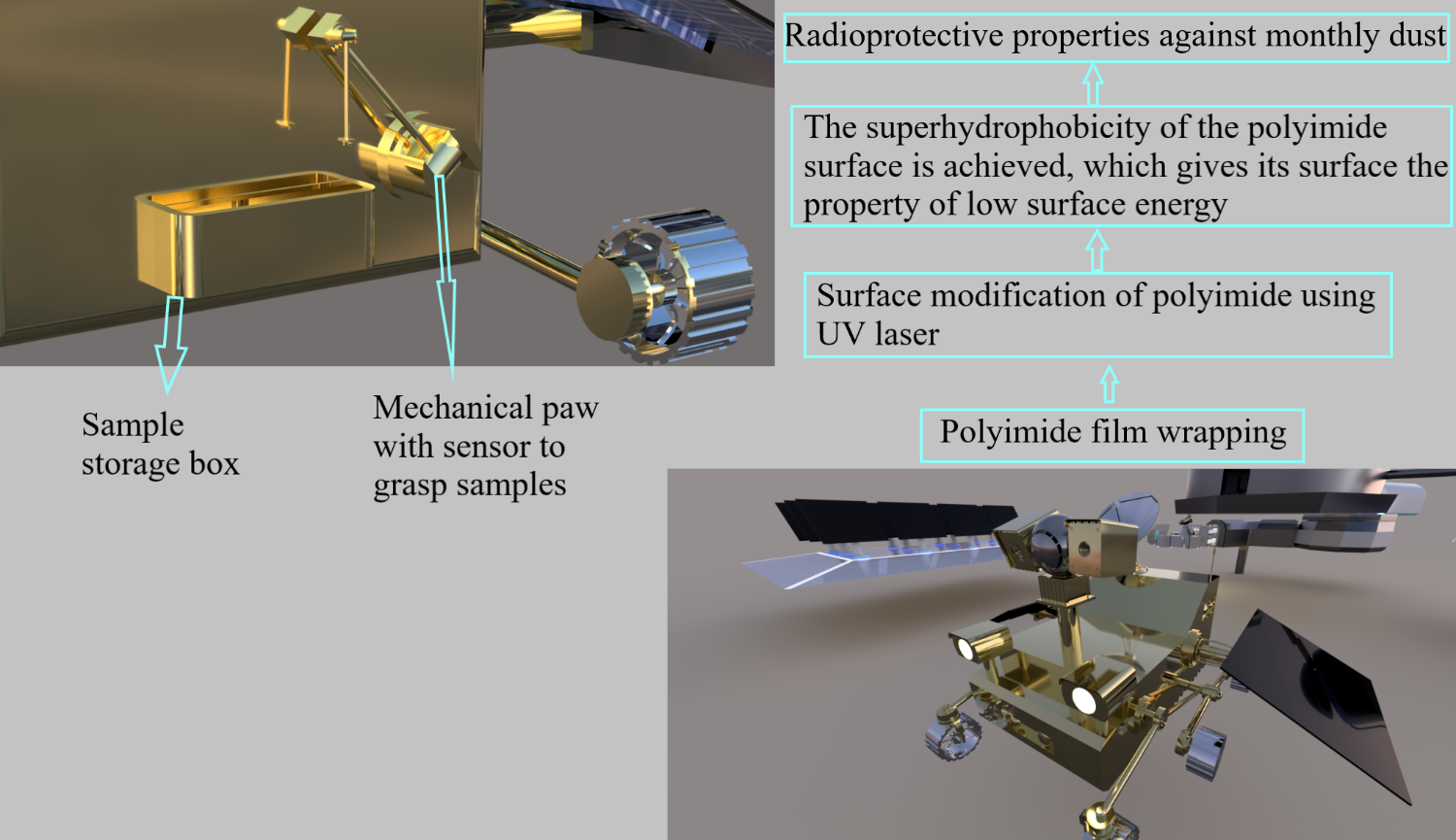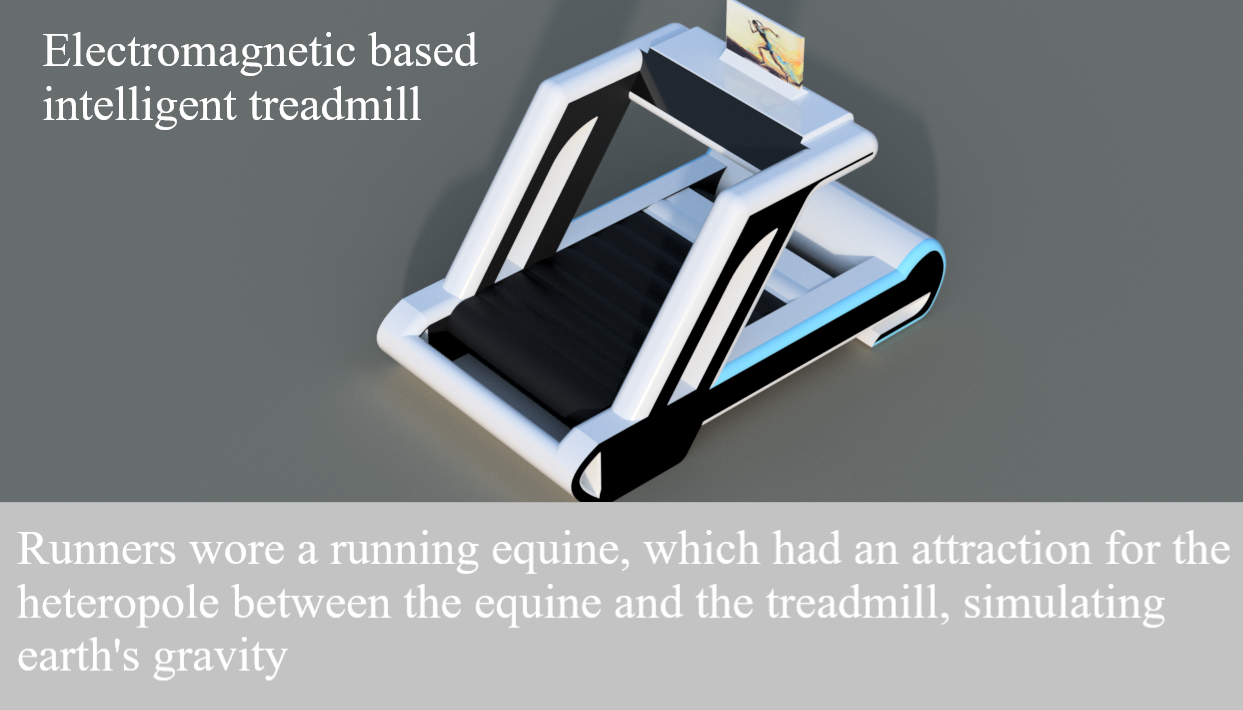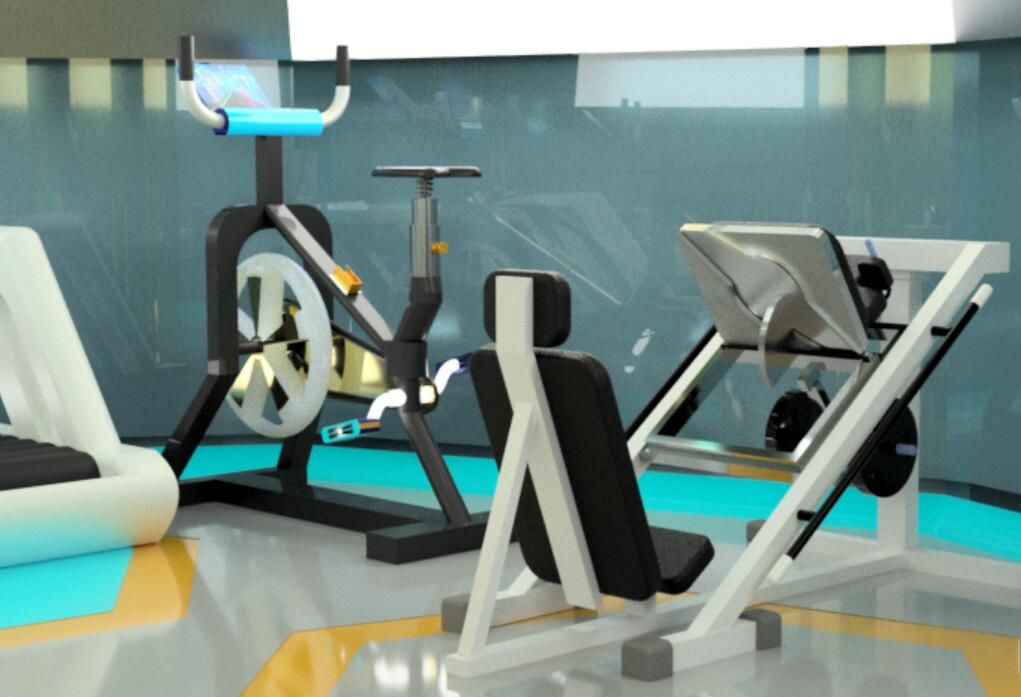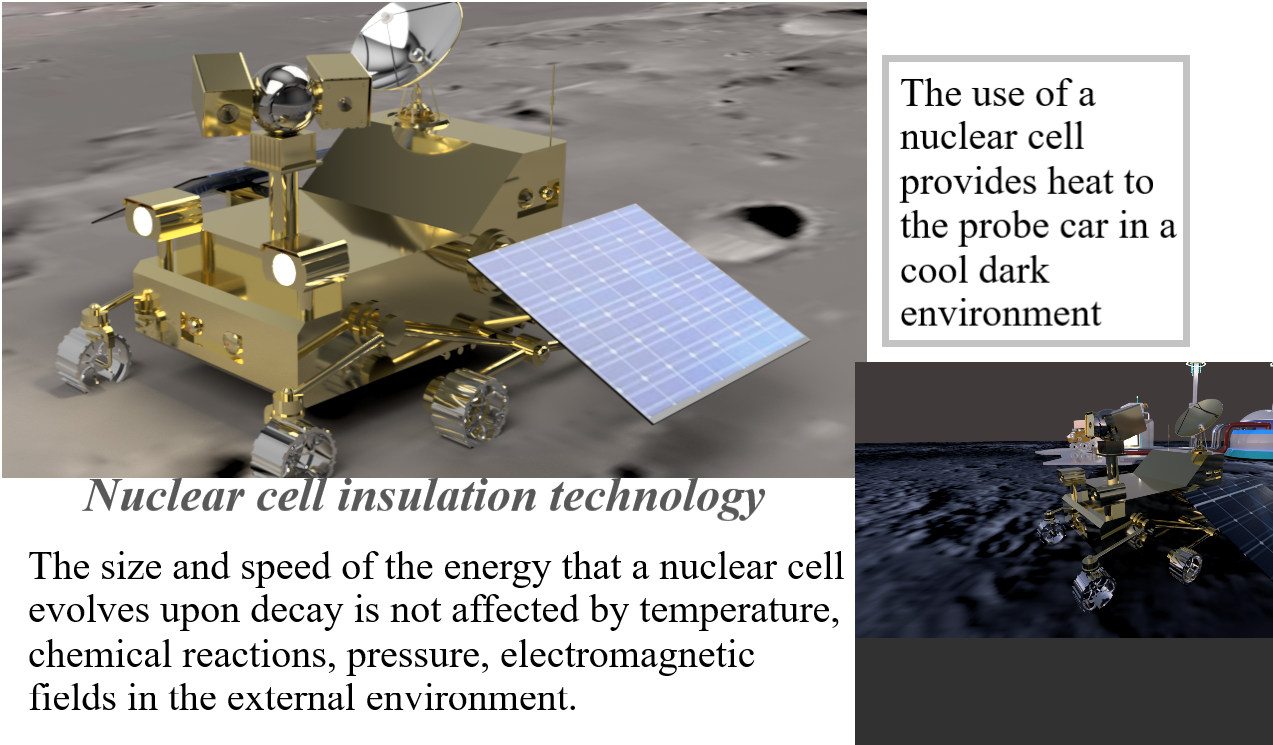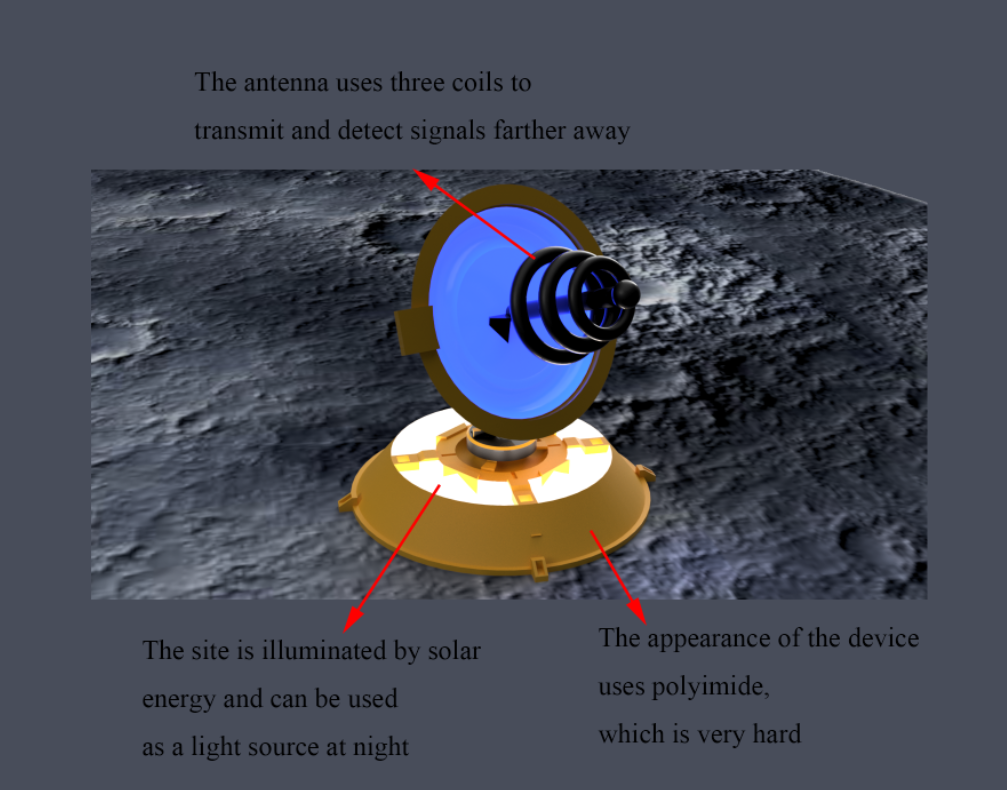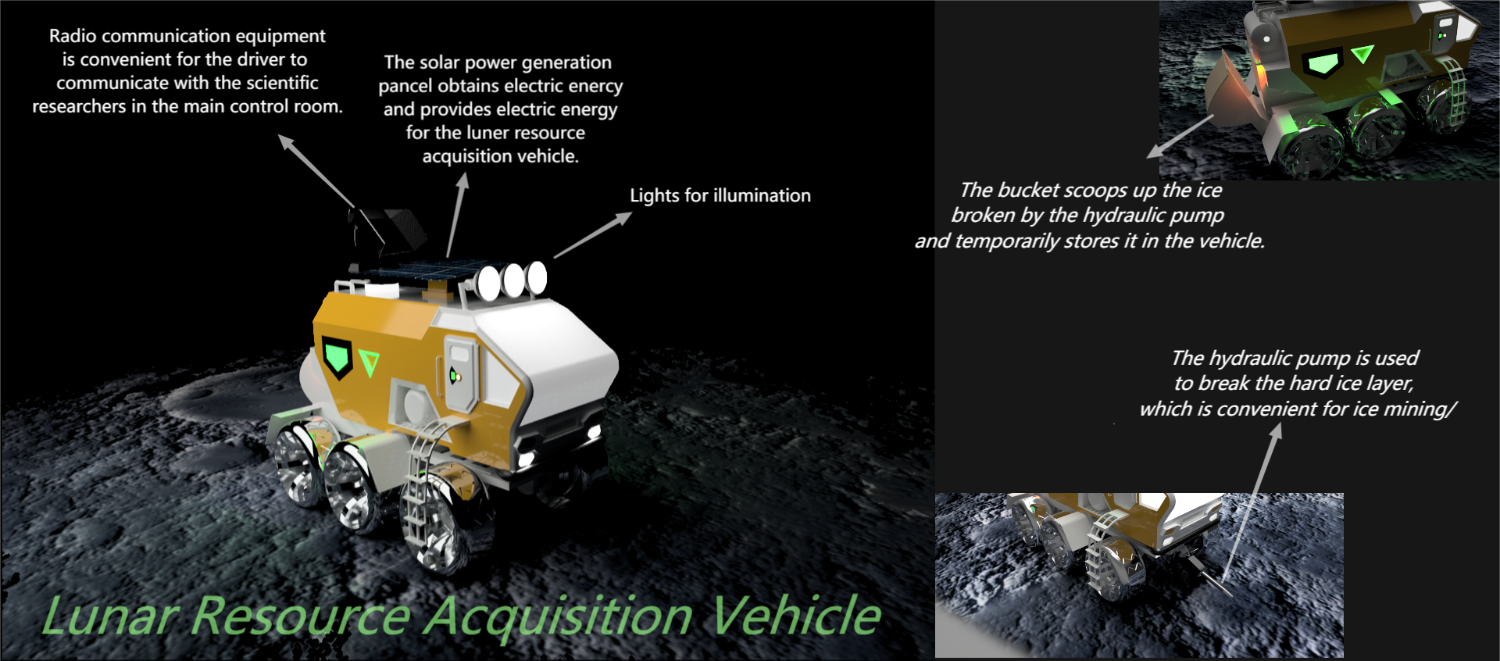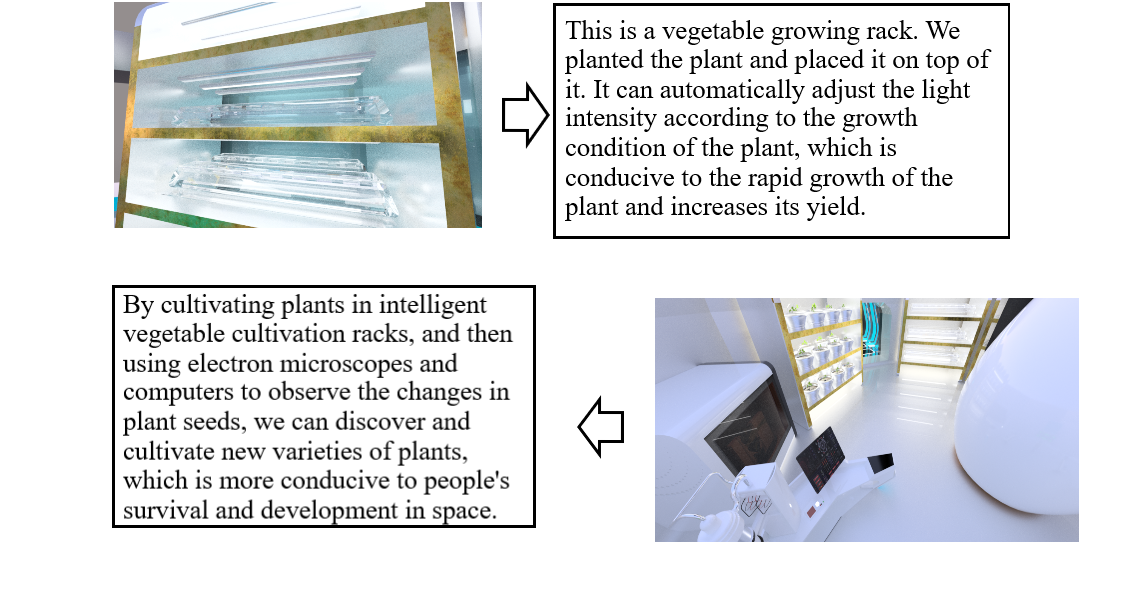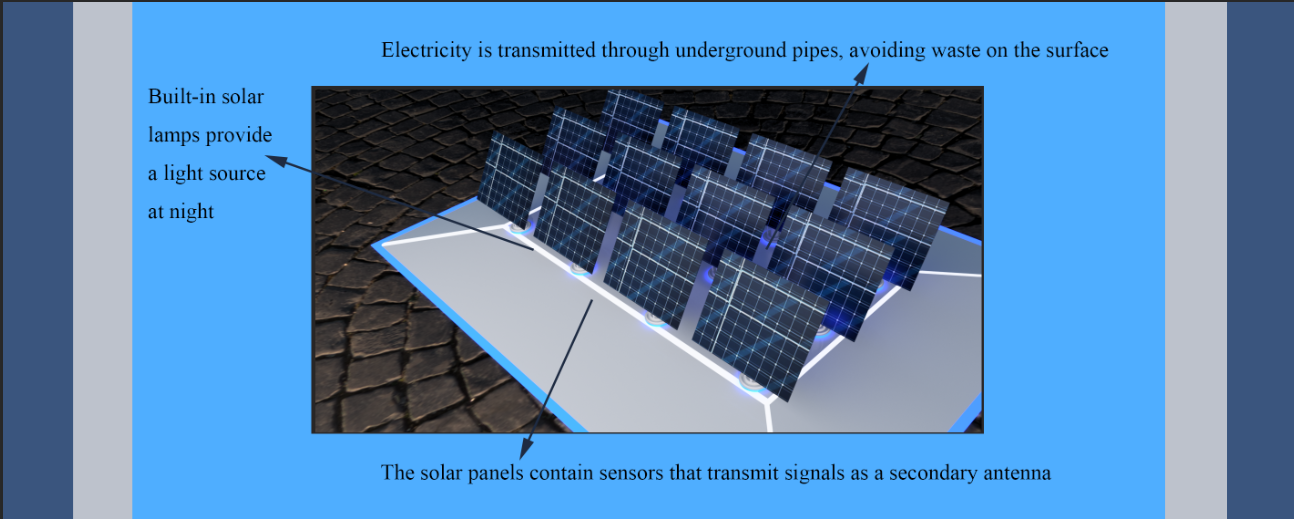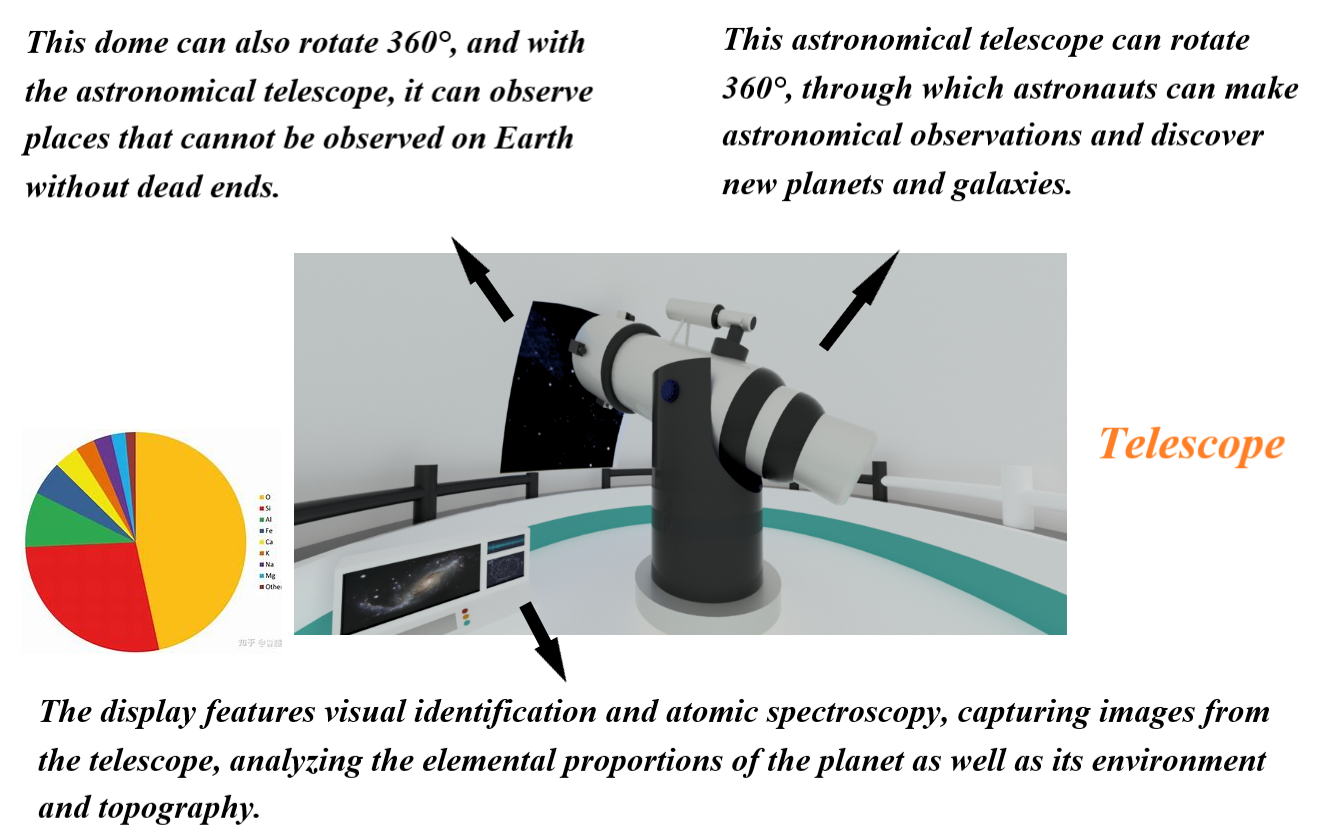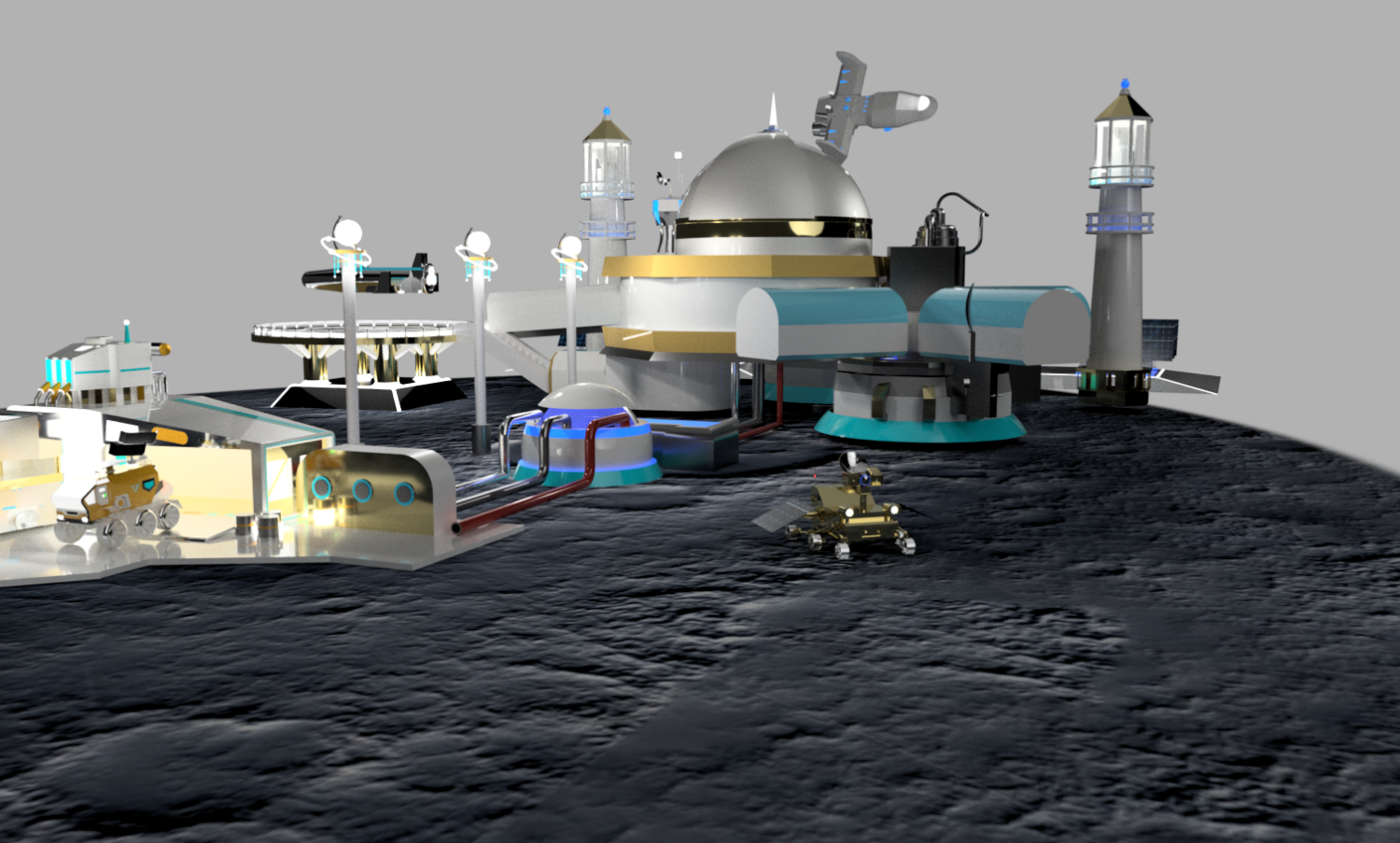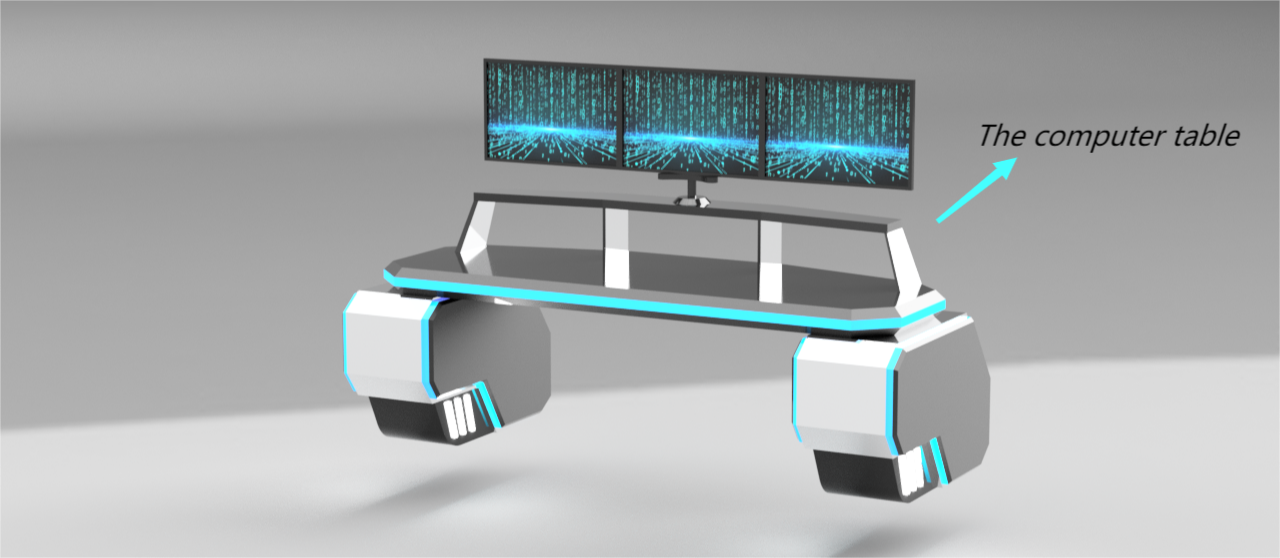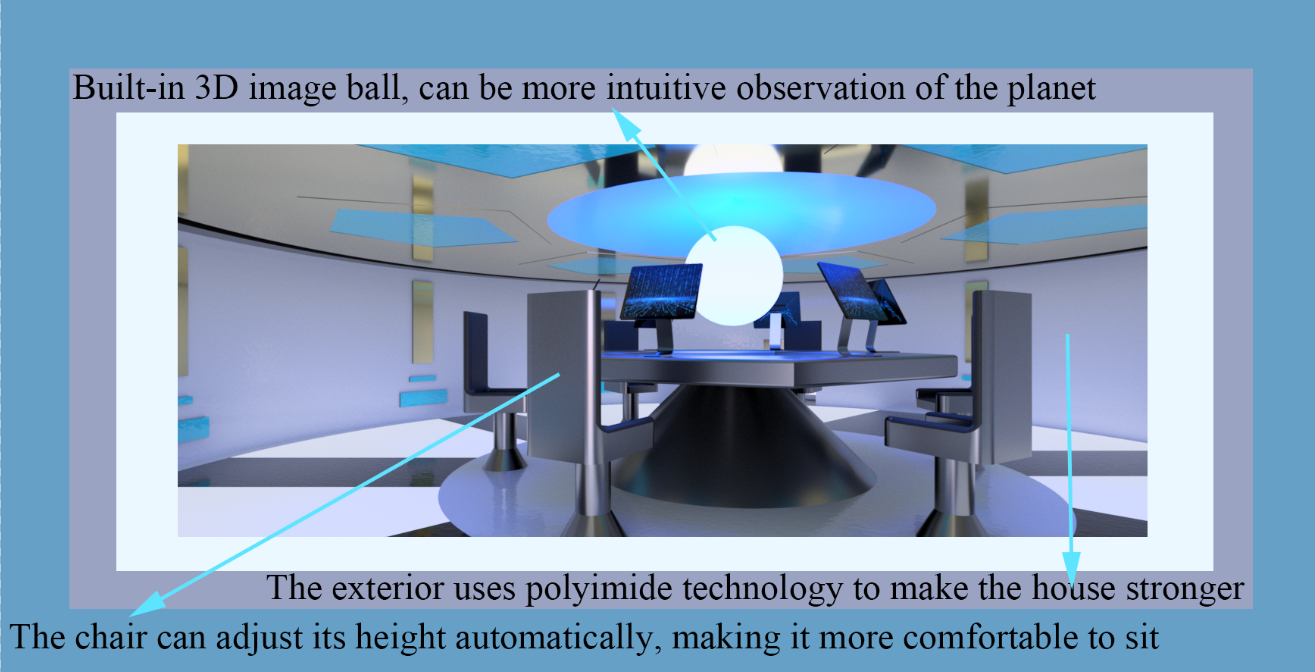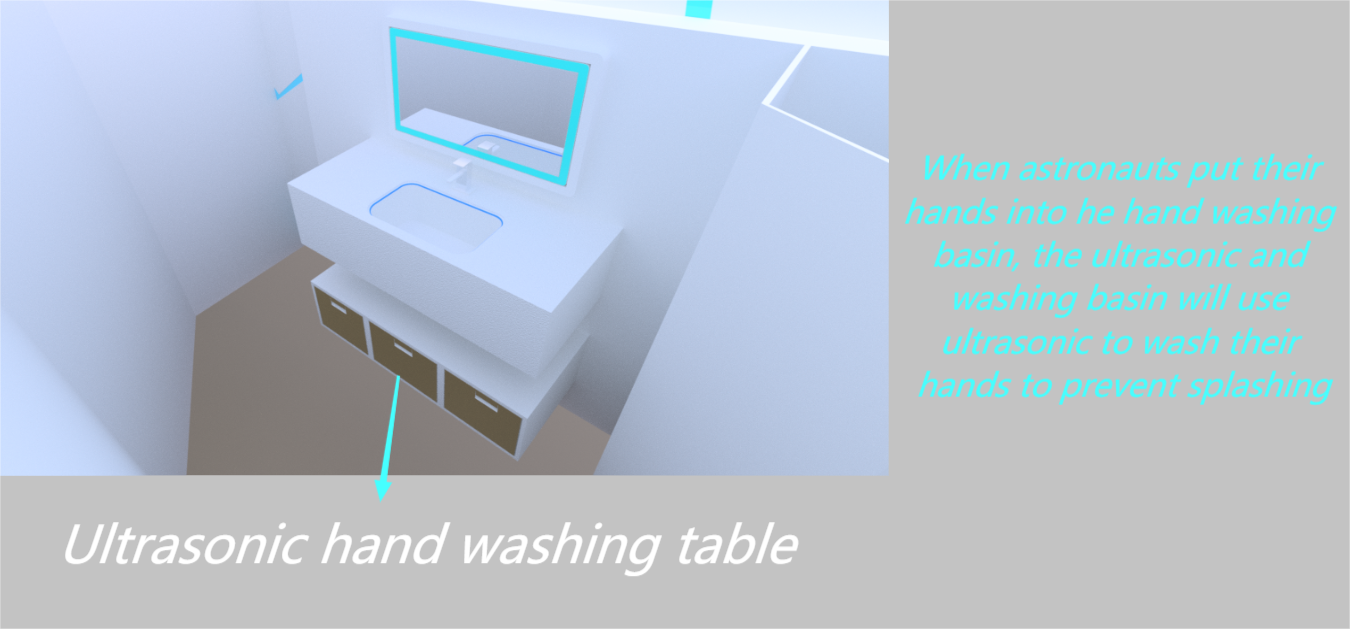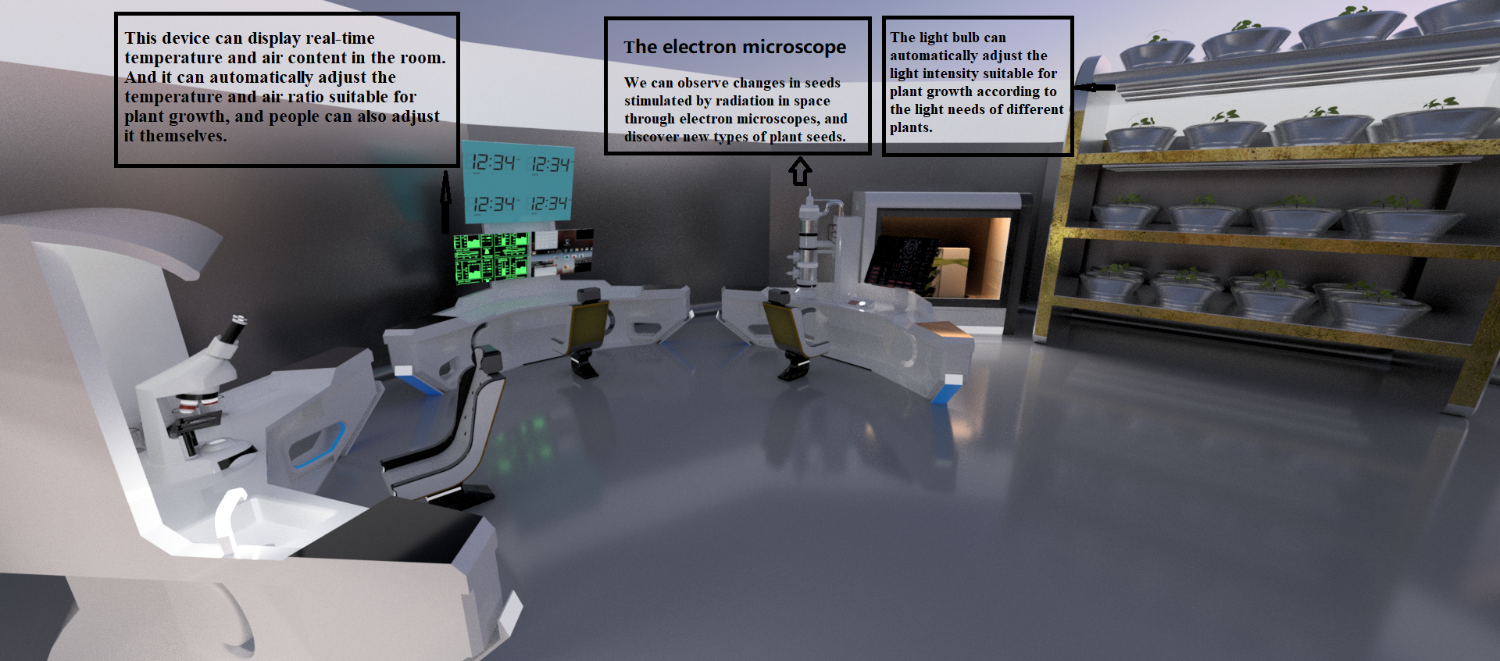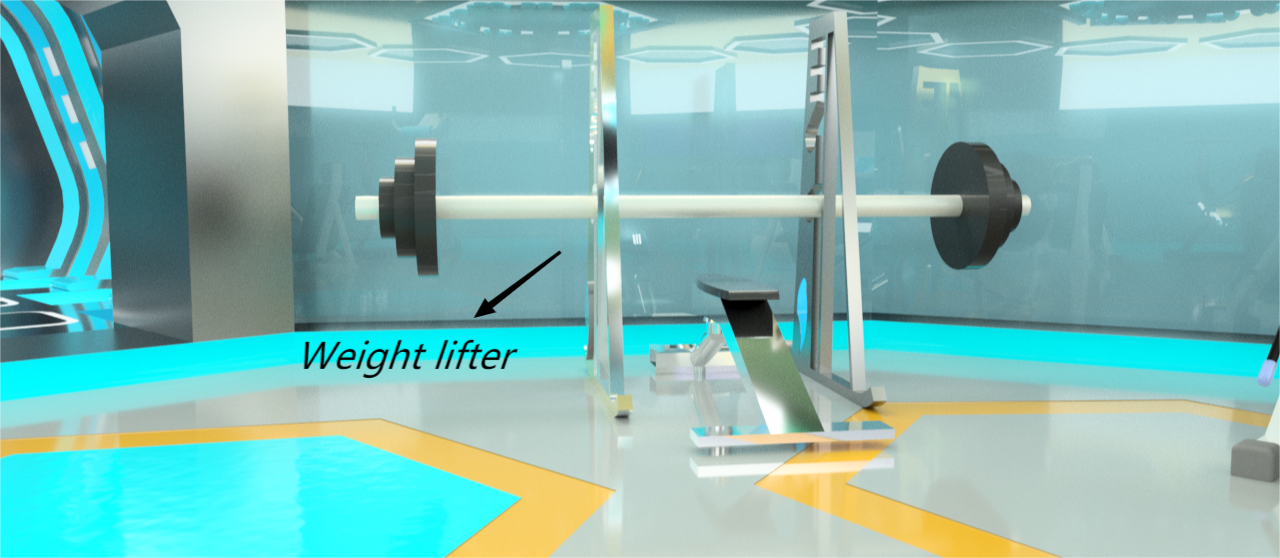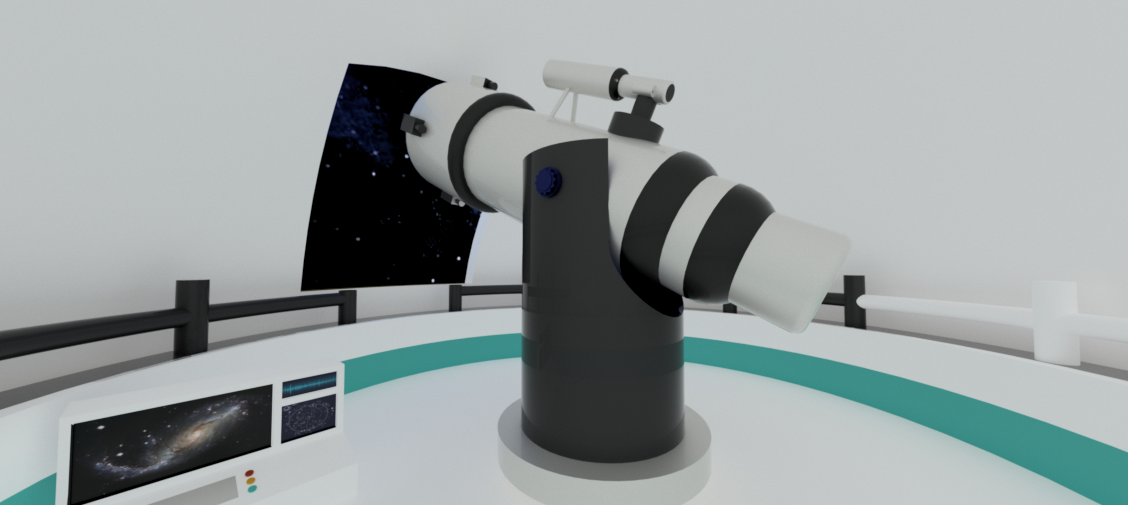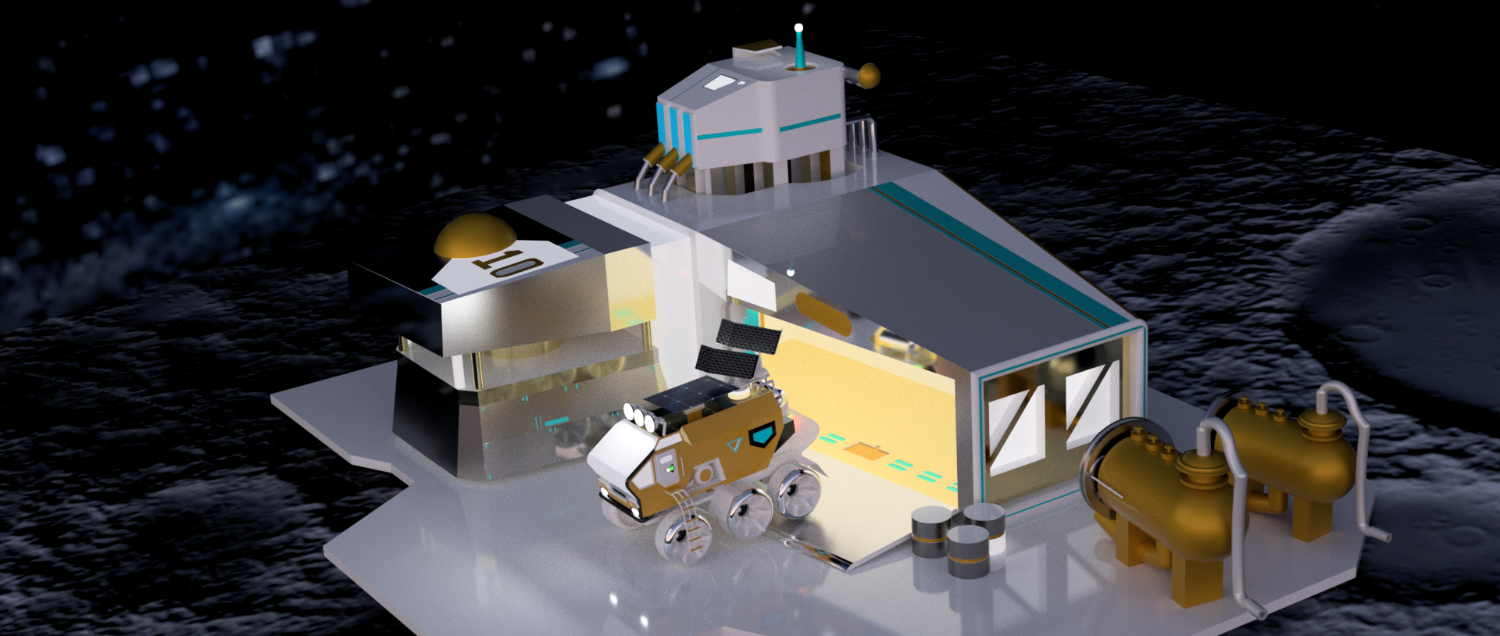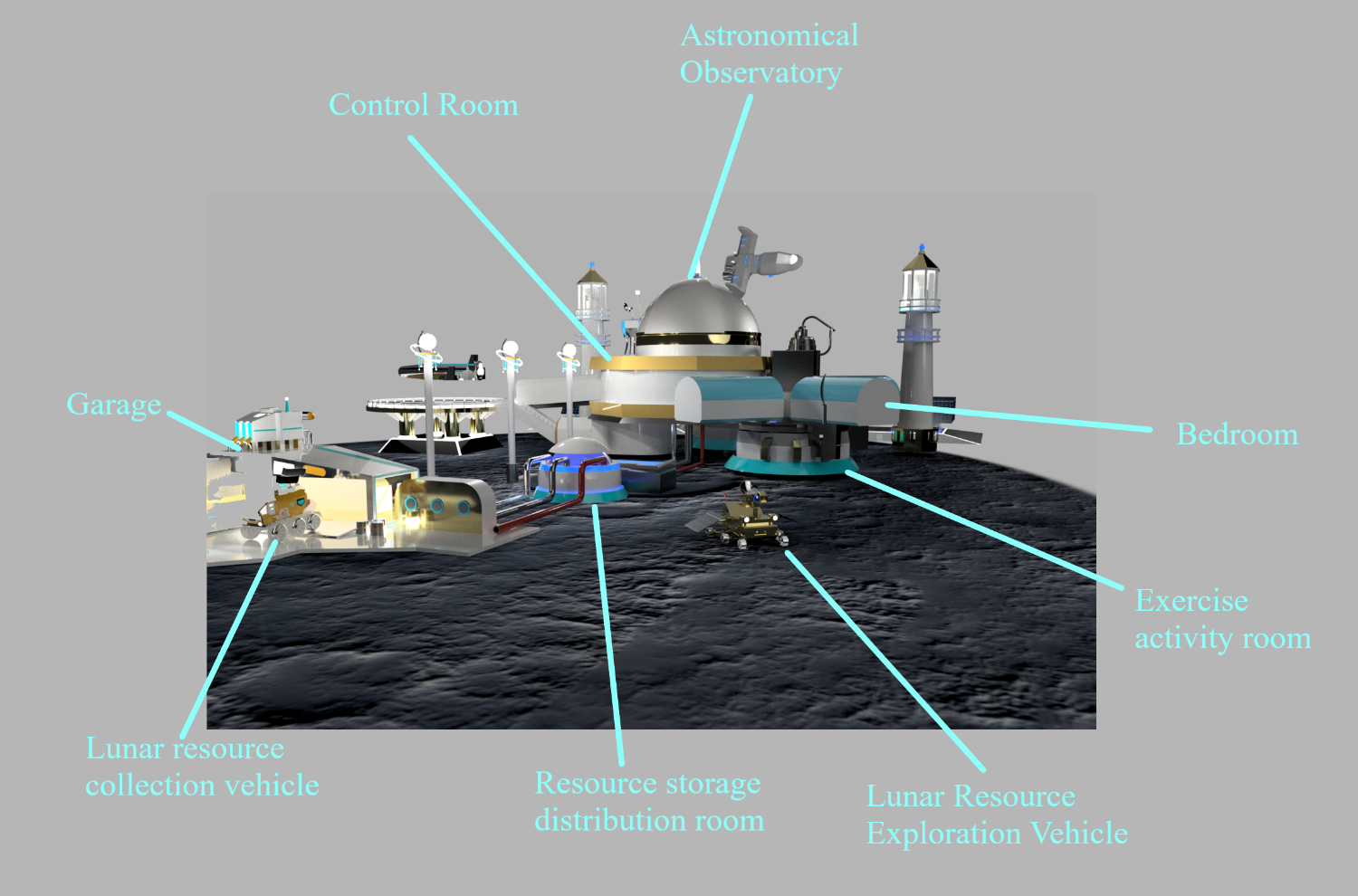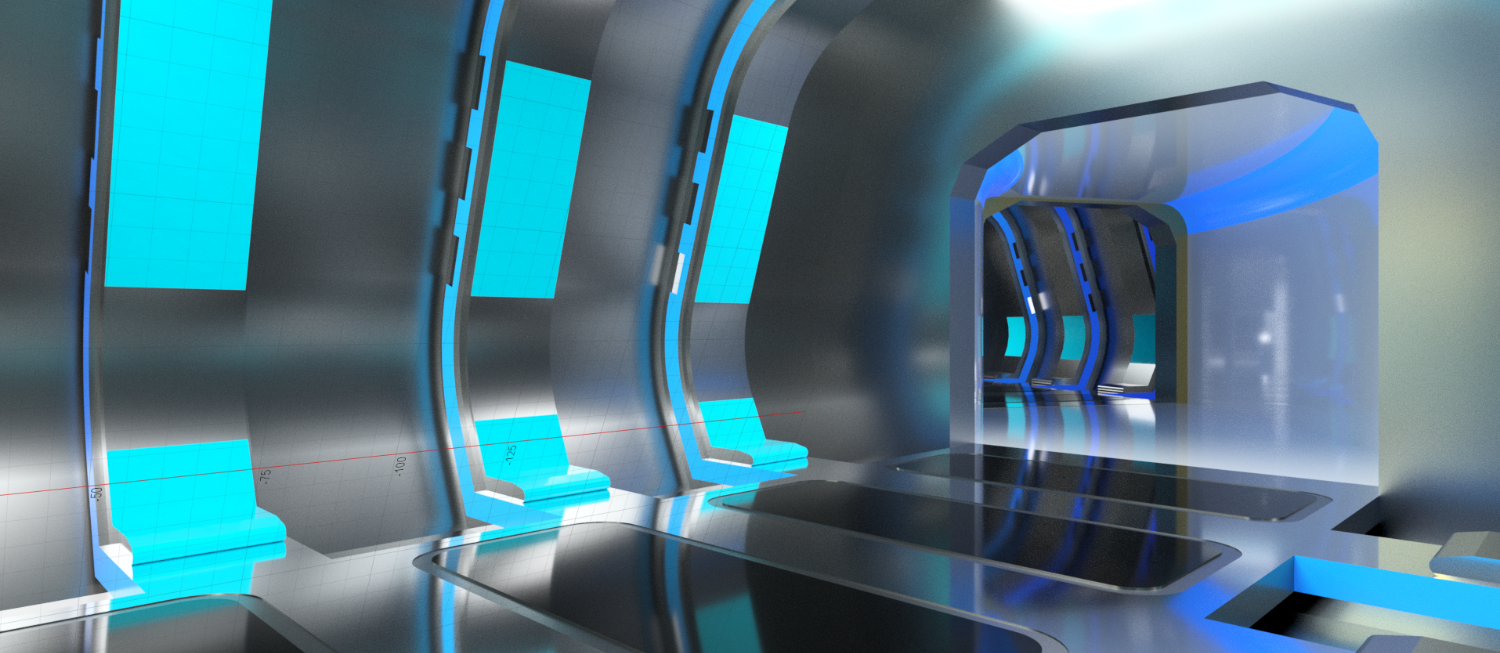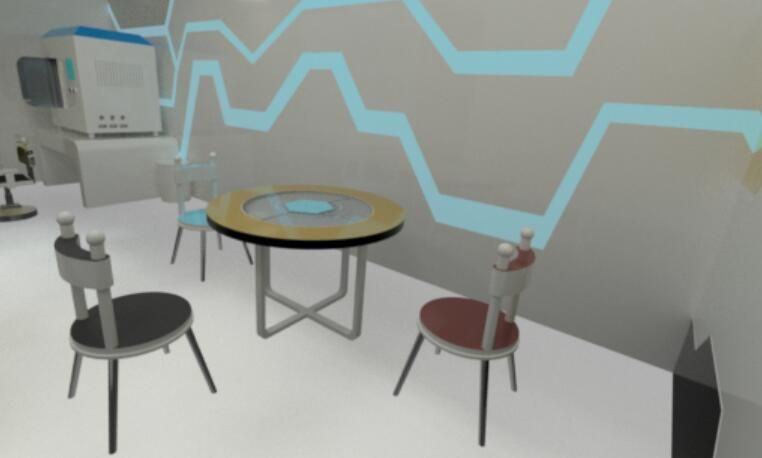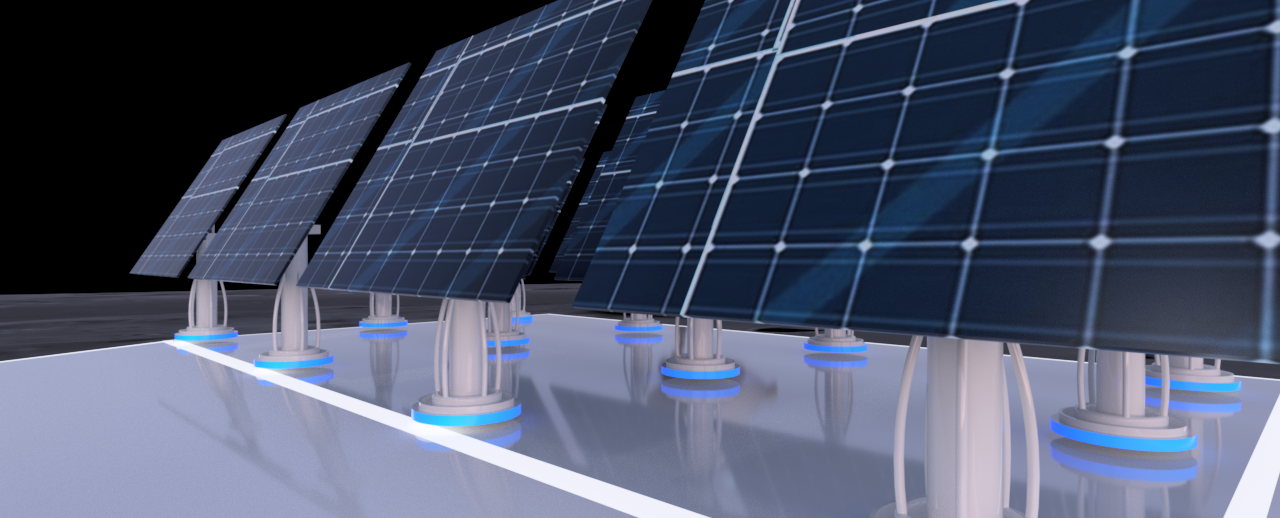Moon Camp Pioneers Gallery 2021-2022
In Moon Camp Pioneers each team’s mission is to 3D design a complete Moon Camp using Fusion 360. They also have to explain how they will use local resources, protect astronauts from the dangerous of space and describe the living and working facilities.
Team: Three-dimensional player
郑州轻功业大学附属中学 河南省郑州市 China 19 4 / 1
External viewer for 3d project
|
Project description
The first phase of the moon camp was set as the scientific exploration phase to a self-sufficient resource setting. We will adopt digital twinning technology, on the one hand we will construct a virtual digital base: the equipment within the base will realize all things interconnected and mutually receptive based on 5g technology and various sensors, we only need within the base system can easily obtain any data of various parts of the base; On the other hand, we set up the digital Moon: the establishment of the digital moon will be based on the sensing system of the “” moon resource detection vehicle “”, which will collect the data out of base, upload it in real time to the digital moon system used to map the digital moon, and eventually establish a digital moon system containing details of resource distribution, topography, temperature change, etc. We are going to do the probing and acquisition of resources and address the acquisition of water resources; Building biological research rooms to explore the growth status of plants in the space environment and breed space plants that can provide trace elements and energy; The base will build astronomical observation stations for deep space detection. The base will build a solar plate array for getting power, and a solar generation plate for getting power. In the early days our mission was to continue to probe the moon and survive it |
|||
|
2.1 Where do you want to build your Moon Camp?
The moon base is built up in the moon Arctic, with space boats’ Moon explorers’ having clotted water (ice) on the moon’s Arc;tic interspersed with the moon Arctic craters, yielding preliminary estimates of 0.01-0.3 billion tons. Establishing a moon base in the moon’s Arctic provides direct access to water, and there are diurnal phenomena at the moon’s poles to obtain continuous sunlight for electricity generation at the base. In addition to the discovery of lava holes in 50 km diameter craters northeast of the filoraus crater in the moon Arctic region, which is the entrance to a large group of subsurface lava holes that can withstand radiation from space, in future explorations if rock holes are found inside our moon camp will move into lava holes. 2.2 How do you plan to build your Moon Camp? Describe the techniques, materials and your design choices.
Construction:Employing aerated bases, compressed aerated pouches are transported from the earth, flushed into gas during the moon, then connected for assembly, and finally covered on the outside of the base with a thick monthly soil to defend against partial space radiation. For parts of the devices within the base such as tables, cabinets, etc., we’ll go from Earth band compressed material to moon and then print out the associated equipment using a 3D printer, in addition to print recycle waste material within the moon base and reuse. Materials and Technologies: The nano organic silica adhesive is combined with silica nanoparticles to create a mechanically strong and self-cleaning reflective coating. The coating has a peak transmittance of 99.9%, a water contact angle of 161 ° and a hardness of 4.2gpa. It can be applied to the self-cleaning of solar panels.、 The deposition of 2nm positively charged nanoparticles of TiO2 on the surface of indium tin oxide (ITO) – coated glass using electrodeposition method can adsorb negatively charged monthly dust particles, and the light transmittance of TiO2 / ITO coated glass substrate improved from 75-87% to around 85% after treatment, which was used to probe the camera surface in the equipment and achieved the effect of dust prevention to ensure good light transmittance. On the moon subsequent moon cart, which can work for up to 14 consecutive days, after entering the moon night, it will switch off all energy consuming functions due to its inability to generate electricity through the light, turn on only the wake function and positioning function and enter dormancy. After 14 days, one can wake up automatically, delivering heat to the moon probe car on a cold night using radioisotope decayed electricity generating nuclear cells at night.
2.3 The environment on the Moon is very dangerous for the astronauts. Explain how your Moon Camp will protect them. (maximum 150 words)
A monthly soil shell was built on the outside of the base, which was used to defend against part of the rays. Polyimide itself has high mechanical strength, good dielectric, high temperature stability, radiation resistance and other advantages. Du et al used a UV laser for surface modification of polyimide, using high-pressure argon to remove debris generated upon surface laser deformation. The results indicate that the superhydrophobicity of laser textured polyimide surfaces can be achieved in the case of laser treatment using low power intensity and high pulse overlap, embodying the nature of surfaces with low surface energy. Metallic aluminum is one of all metals with a high absorbance for radiation prevalent reflectance. A sandwich type polyimide plus aluminum plus polyimide structure wrapped outside the moon base shell and moon cart provides both effective protection against radiation and heat retention as well as protection against oxidation of metallic aluminum. |
|||
|
2.4 Explain how your Moon Camp will provide the astronauts with:
|
Water
|
Food
|
Power
|
Air
|
|
the specific location and reserve of water resources acquired by the ‘lunar resource exploration vehicle’ and the associated data were transferred to the digital lunar system, which was cleared by astronauts in base total control rooms to learn the details of lunar resources, which they manipulated remotely, ”moon resource collector “” to the designated location for water resource collection. The resource collection cart will first heat the ice layer through reflection of sunlight to reduce the hardness of the ice. Then break the ice layer using a hydraulic freezer, followed by using a bucket spatula to break the ice, and finally pour into the processing unit for heat filtration to obtain pure water and remove waste. The collection cart will finally deliver water resources to the resource collection distribution unit in the base, distributing water resources on demand. |
In the initial stage, the food supply of the lunar camp mainly comes from the earth. In addition, the lunar base will establish its own vegetable research laboratory. We will study the growth status of different vegetables in the lunar environment, collect relevant data, sort and analyze them, and formulate relevant cultivation schemes. Finally, according to the relevant data and schemes, we will cultivate vegetables that can not only grow healthily in the lunar environment, but also provide astronauts with various inorganic salts and energy. Expand the planting area of such vegetables, increase the output of vegetables, so as to achieve the purpose of self-sufficiency, and export the surplus vegetables to the earth to obtain economic benefits. |
Electricity is generated by irradiated solar panels from solar energy, which is then stored in batteries to provide power to the base. Oxygen and hydrogen are obtained through the electrolysis of water resources, oxygen is used to make air, hydrogen can be used as the energy source of the spacecraft, when the energy of the lunar base is sufficient, the lunar base will become an energy replenishment station for deep space exploration and export the excess energy to the earth for economic benefits. In addition, our lunar camp will have a 3D printing recycling device to recycle resources. For example, after astronauts use the end-of-life devices, they can decompose and classify them into a 3D printer, and they can print out the new devices they want and realize the recycling of resources. |
The oxygen obtained by water electrolysis will be delivered to the “resource room storage and distribution room”, “Lunar resource storage and distribution room” stores compressed nitrogen and carbon dioxide, “lunar resource distribution room “Connected to the digital base through the digital twin, nitrogen and carbon dioxide are mixed in proportion according to the air proportion in the base and the analysis of various data to produce air. Because of the low gravity environment of the moon, the small solid particles in the base stay in the air for a long time, endangering the health of astronauts, so the base is also equipped with an air filtration system to remove the micro dust particles floating in the base through circulating filtration and improve the air quality. |
|
2.5 Explain what would be the main purpose of your Moon Camp.
The main purpose of the moon camp was for scientific research. In deep space detection: since the earth’s observation space is always under the infl uence of the earth’s atmosphere, affecting observation accuracy, the moon base builds astronomical stations for deep space detection; Research rooms will be set up for plant planting for research on vegetable cultivation with self-sufficient purposes; A moon base is also constructed by a digital twinning system that bridges a digital base with a digital moon. Waiting until the moon base is self-sufficient, the excess energy resources will be exported to earth for economic benefits sustaining the long-lasting development of the moon camp, which in the future will serve as the first transit station for humans to explore outside space. |
|||
|
3.1 Describe a day on the Moon for your Moon Camp astronaut crew.
After the astronauts wake up in the morning and wash, they can freely choose various fitness equipment such as legging machine, spinning bike, treadmill and weight lifter for fitness exercise, have breakfast together, and then start the day’s work. The astronauts will first go to the general control room to conduct a comprehensive inspection of the lunar camp to ensure the normal operation and air quality of radio communication devices, observatories, resource storage and distribution devices, solar energy board arrays and other equipment in the base, Room temperature and other parameters are normal. Then the astronauts will perform their respective duties. The astronauts responsible for deep space exploration will open the observatory dome through remote operation, adjust the direction of the telescope, capture cosmic images, analyze and process them, and transmit the image information to the earth for in-depth analysis; Astronauts in charge of plant research will complete their work in the biological laboratory, study and analyze plants through electron microscope, sterile operation table, incubator, Cultivation Cabinet and other equipment, and formulate and modify relevant cultivation plans; The astronauts in charge of resource collection will check the reserves of resources in the lunar resource storage and distribution room, then operate the lunar resource collection vehicle to collect water resources where there is ice, and transport the collected resources to the resource storage and distribution room; Astronauts in charge of resource exploration will remotely control the resource collection vehicle to detect the moon and collect samples, and collect various data and transmit them to the digital twin system. At the end of the night, the astronauts will hold a meeting with the staff on earth to summarize the day’s work, discuss the problems, formulate relevant solutions and plan the next step. After the day’s work, the astronauts can chat and drink tea in the bedroom and have video calls with their families on earth. |
|||


